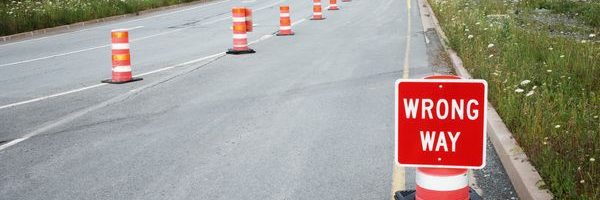Driving down the road and seeing headlights coming your way is terrifying. According to the Federal Highway Administration (FHWA), approximately 300-400 people die each year in wrong-way collisions. It is tempting to discount the seriousness of wrong-way collisions because they only make up about 3% of car accidents. However, they are the most deadly type of collision and are more likely to result in fatal or catastrophic injuries.
How do Wrong-Way Collisions Happen?
A wrong-way collision occurs when a driver is driving their vehicle in the opposite lane of traffic. This frequently occurs when a driver enters a highway from an exit ramp rather than an entrance ramp. It can also happen when a driver swerves into the oncoming lane of traffic. A wrong-way collision can also happen when a driver attempts to make a U-turn and ends up in the wrong lane of traffic.
Factors Surrounding Wrong-Way Collisions
The National Transportation Safety Board (NTSB) conducted a thorough investigation into wrong-way collisions and published a Special Investigative Report. In the report, the NTSB noted some common factors that surround and contribute to these types of accidents:
- Driver Impairment—close to 75% of wrong-way drivers are impaired by drugs or alcohol. NTSB found that 60% of fatal crashes involved impaired drivers and believed this number might be underreported.
- Older Drivers—drivers over the age of 70 were over-represented as at-fault drivers in wrong-way collisions. They constituted nearly 15% of wrong-way drivers even though they were only 3% of overall drivers.
- Night Collisions—wrong-way collisions were more likely to occur at night 78% of fatal wrong-way collisions occurred between 6 p.m. and 6 a.m.
- Weekends—a disproportionate number of wrong-way collisions happen on the weekends
- Missing or Unclear Signage—if signs are missing or lane markings are faded, it can lead to driver confusion and wrong-way collisions. In these instances, the city or state may be responsible and shortened time periods may apply for starting a lawsuit.
It’s difficult to avoid a these types of collisions, but if you see a driver going the wrong way, the best thing you can do to save lives is to immediately report the driver’s location to the police.
Contact an Experienced Car Accident Attorney
If you are injured in a wrong-way collision, you should consult with an experienced car accident attorney. The attorneys at Bonina & Bonina, P.C., have been helping the victims of car accidents for over 50 years. Contact us online or call us at 1-888-MEDLAW1 to schedule your free consultation. Home and hospital visits are available. Se habla español.

